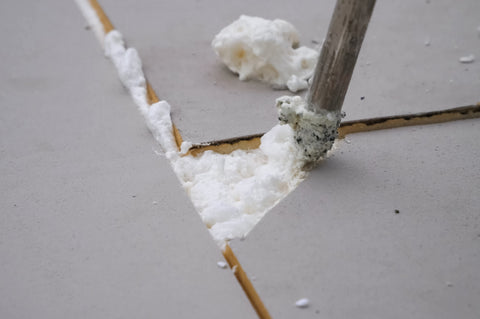
mounting foam
Assembly/construction foams are suitable for sealing, filling and insulating gaps and due to their good adhesion properties they are also used to bond joining materials. Most assembly foams are based on polyurethane, which means that the cured foams have a high chemical resistance and are also very durable. The disadvantage, however, is that intensive UV radiation causes the foam to gradually discolour. In addition, the hardened foam is difficult to remove from surfaces. Therefore, care should be taken during application that the areas where the foam should not reach are well covered. During application, attention must also be paid to the expansion of the foam. 1-component assembly foams expand more than 2-component assembly foams, making them less suitable for use in door frames, windows and similar applications. There are further differences in the curing of the foam. 1-component assembly foams need water to harden, this can either come from the air or from additional moistening of the surface onto which the foam is sprayed. Since the foam hardens from the outside in, using too much water is counterproductive, as this will result in an uneven foam pattern, which will affect the properties and performance of the foam. With 2-component construction foam, on the other hand, care must be taken to ensure that the air humidity is not too high during curing and that water does not come into contact with the foam. This would mean that the desired properties, such as higher density and low expansion, can no longer be guaranteed. As the name 2K already implies, in addition to the polyurethane base, there is a hardener that is necessary for the curing process. The disadvantage of the 2K assembly foam is that it must be used up immediately after opening, because the reaction starts in the cartridge, which means that reuse is impossible. In principle, the can should be shaken sufficiently before use. When storing, make sure the can is stored upright to avoid leaks at the can head. The reason for this is that air and thus moisture get into the can due to the leak, and this starts the curing process with the polyurethane in the can.


